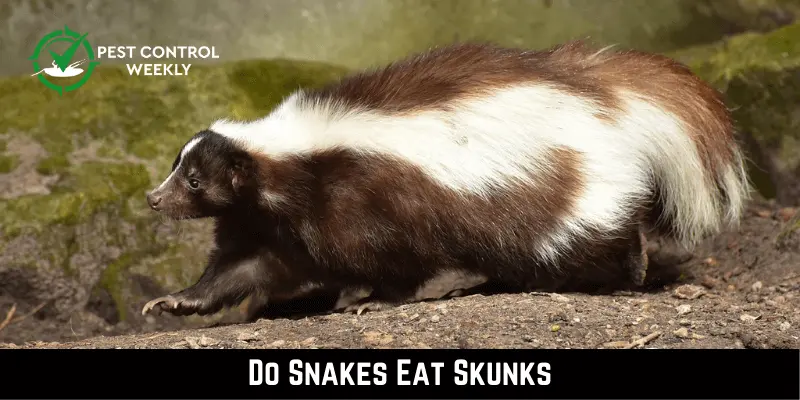In nature, the interconnected chain of life leads to a lot of interesting things. One of the most fundamental interactions, predator-prey partnerships, can sometimes surprise you. Is there any truth to the rumor that snakes devour skunks?
Yes, it’s true that some snakes, like the Great Basin gopher snake and the common kingsnake, eat skunks. They can eat skunks because they’re immune to the skunk’s spray. One’s first impressions may need to do justice to the complexity of the variables at play in this out-of-the-ordinary food chain interaction.
In this article, explore this fascinating area of nature with us. We’ll also examine snake and skunk adaptations and survival strategies. If you want to learn more about these animals and get some of your questions answered, keep reading.
Skunks As Prey
In the big picture of nature, even though skunks seem shy, they sometimes get caught in the eyes of snakes that hunt them. The Great Basin gopher snake and the eastern diamondback rattlesnake are two of the most common snakes seen feeding on small mammals.
This weird food choice is based on several things, such as the predator’s weight and size and how it hunts. However, These attacks are rare because skunks are difficult prey for even the most desperate snakes due to their complex defense mechanisms, nocturnal lifestyle, and physical strength.
Skunk Defense Mechanisms
Even though skunks look simple, they have a powerful set of defenses that keep most attackers away, including snakes. Their most well-known tactic is the release of a smelly spray from specialized anal glands, which can temporarily blind an attacker and cause major pain. Skunks also use a variety of alerts before using chemical weapons. Hissing, foot-stamping, and tail-raising warn predators to run away.
Skunks’ black-and-white aposematic appearance and unusual nocturnal behaviors warn predators that they are unappealing. These defenses make it harder for predators to kill these animals and help them stay alive in the wild.
Encounters Between Snakes and Skunks
Skunk-and-snake encounters are fascinating examples of how animals have adapted to their environments. Snakes, well-known for their variety and predatory abilities, commonly find skunks an available food source. These black and white mammals are easy prey for larger snake species due to their powerful bodies and lightning-quick attacks.
Skunks don’t play a role in this life-or-death game actively. They hiss, stamp, and raise their tails to deter snake predators. If these visual deterrents don’t work, skunks use their “ace in the hole,” a smelly, blinding spray that comes out of their anal glands and can stop even the boldest snake.
These encounters, which typically take place at night due to the nocturnal nature of skunks, are proof of the age-old fight between predator and prey and the ever-resounding agreement for survival.
Factors Influencing a Snake’s Decision to Attack a Skunk
Many factors affect a snake’s decision-making process before deciding whether to attack a skunk. The snake weighs its hunger, the skunk’s defenses, and the chance of its successful attack to determine the risk-reward situation.
The snake’s previous interactions with skunks, predatory nature, and the area around it all play a role. Snakes are more prone to hunt skunks when they’re hungry. Lastly, the snakes have to think about how the skunk’s toxic revenge, a smelly deterrent that could cause temporary blindness or serious pain, could affect their choice to attack.
Size and Species of the Snake
If a snake is likely to attack, a skunk depends on its size and species. Larger snakes, like the Great Basin Gopher Snake or the Eastern Diamondback Rattlesnake, have the size and power to deal with skunks if they want to.
The size of a snake’s prey is directly proportional to the snake’s body size. Therefore, larger snakes have a better chance of physically beating and swallowing a skunk, assuming they are willing to deal with its smelly response.
Availability of Other Prey
In the unpredictable wild, a snake is much less likely to attack a skunk if other animals are easier to capture. Since snakes are selective eaters, they prefer to eat something easier and less dangerous if given a chance.
Prey availability, capture ease, and the amount of nutrients all play important roles when deciding what a snake eats. When food is available and somewhat safe, snakes are less likely to risk attacking a skunk. But if food is limited, snakes might think about eating skunks again, even though they might get hurt.
Why Do Snakes Eat Skunks?
Some snakes have been known to eat skunks in the wild, which may seem odd given the skunk’s bad reputation for its toxic defense spray. A protein-rich diet that consists of a wide range of mammals is a favorite for snakes due to their role as opportunistic predators. So, when food is short, or there is a lot of competition, a big, brave snake might see a skunk as a big, nutritious meal that is worth the risk.
The snake’s size and species, as well as its hunger and the availability of other potential prey, factor heavily into its final selection. So, while skunks aren’t a snake’s main source of food, they can sometimes end up on its plate because of the complicated manner the wild works.
Snake Species That East Skunks
As skunks are a great rivalry of snakes, so no every snake encounters skunks rather some species of snakes fight, kill, and eat skunks. I’ve covered most of the snake species that eat skunks in the forest and other places.
Great Basin Gopher Snake (Pituophis Catenifer Deserticola)
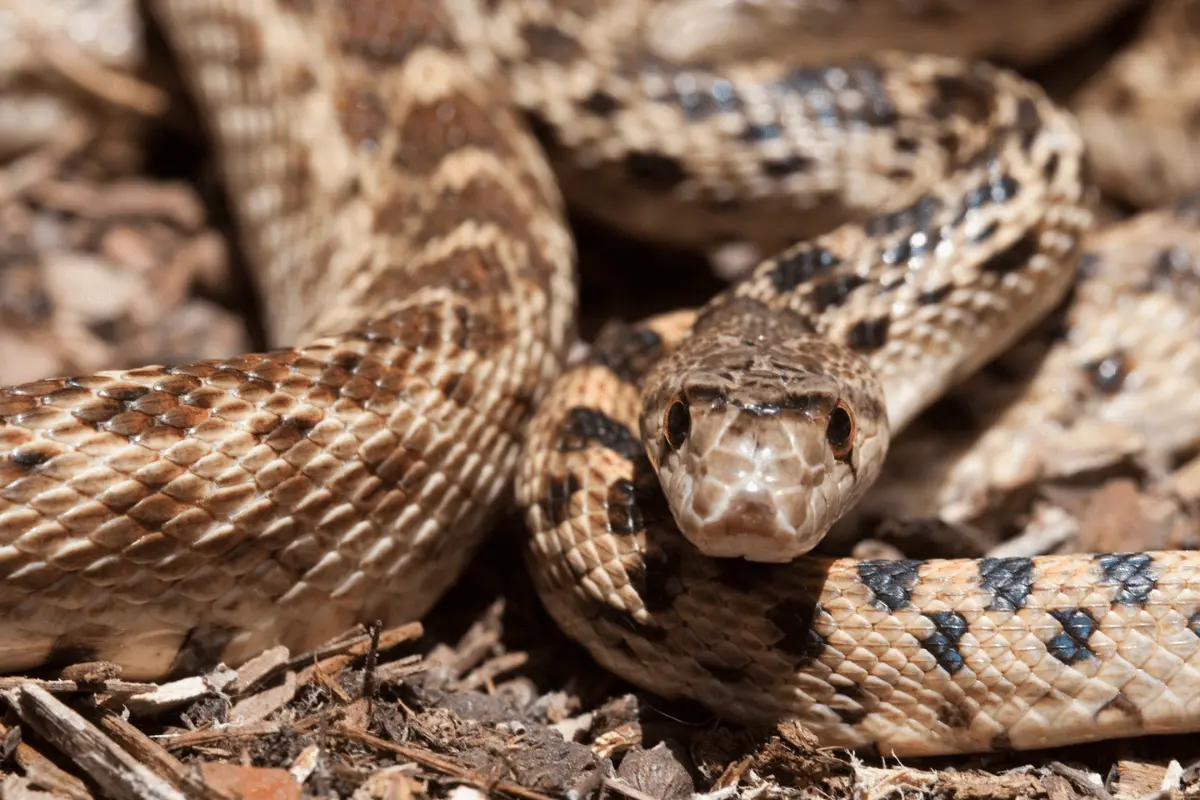
Great Basin Gopher Snakes, which are native to the western part of the United States and are not poisonous, are one of the few animals that are brave enough to think skunks might be food. These large snakes can grow to over six feet in length and feed on various prey, including small mammals, birds, and even skunks.
Their great length and power give them the physical skills they need to catch a skunk, but it’s not a safe thing to do for food. These gopher snakes have excellent senses of smell and hearing, making them ideal for attacking an unaware skunk. Skunks have strong defenses, so encounters like these are rare in nature’s wonderful plan.
Eastern Diamondback Rattlesnake (Crotalus adamanteus)
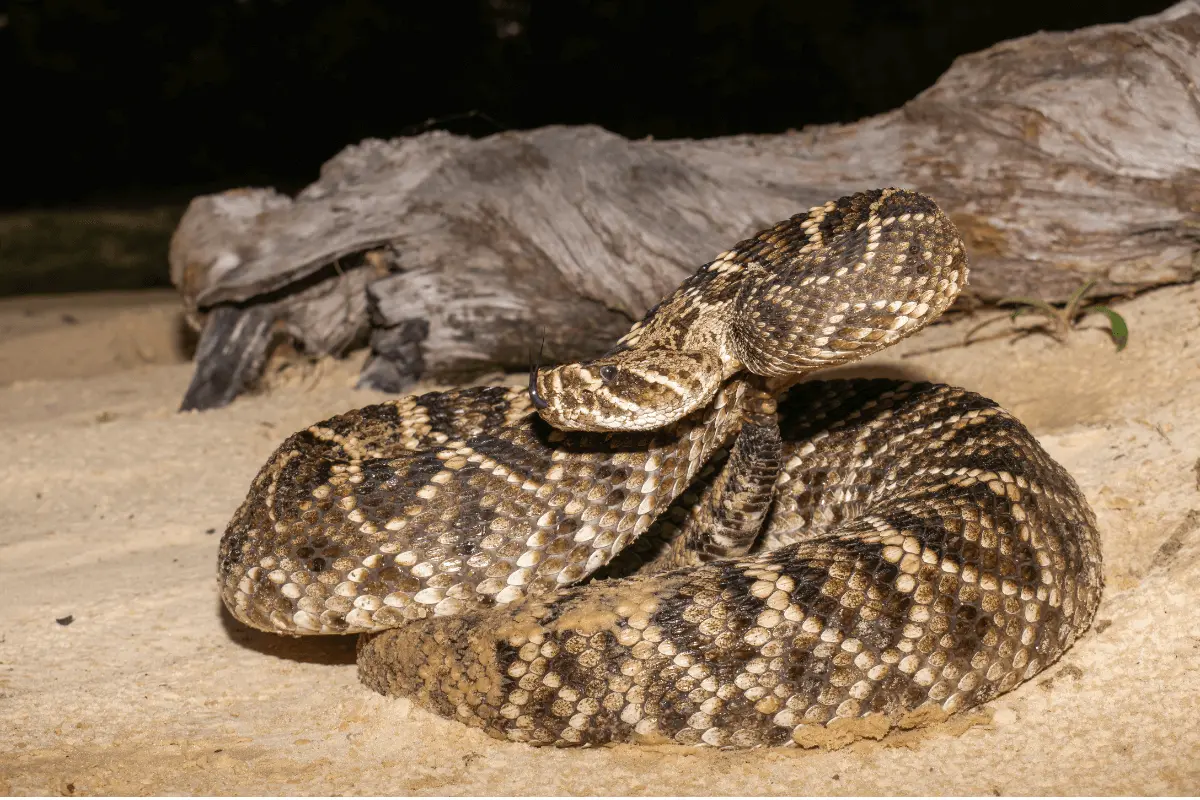
Eastern Diamondback is one of the only snake species brave enough to prey on skunks. The rattlesnake is the heaviest venomous snake in America. These dangerous predators live in the southeastern United States. Their powerful poison and size, often exceeding five feet, make them very scary.
The tiny mammals make up the bulk of an Eastern Diamondback’s diet, although the availability and size of prey might cause these snakes to switch their preferred food source. That’s why a skunk might be a good choice for them sometimes. The Eastern Diamondback’s venom is a deadly mix of neurotoxic and hemotoxic proteins that paralyzes its prey.
However, the skunk’s immunity to snake venom and its potent counter-defenses make every encounter a high-stakes gamble, showing nature’s harsh yet fascinating dynamics.
Bullsnake (Pituophis Catenifer Sayi)
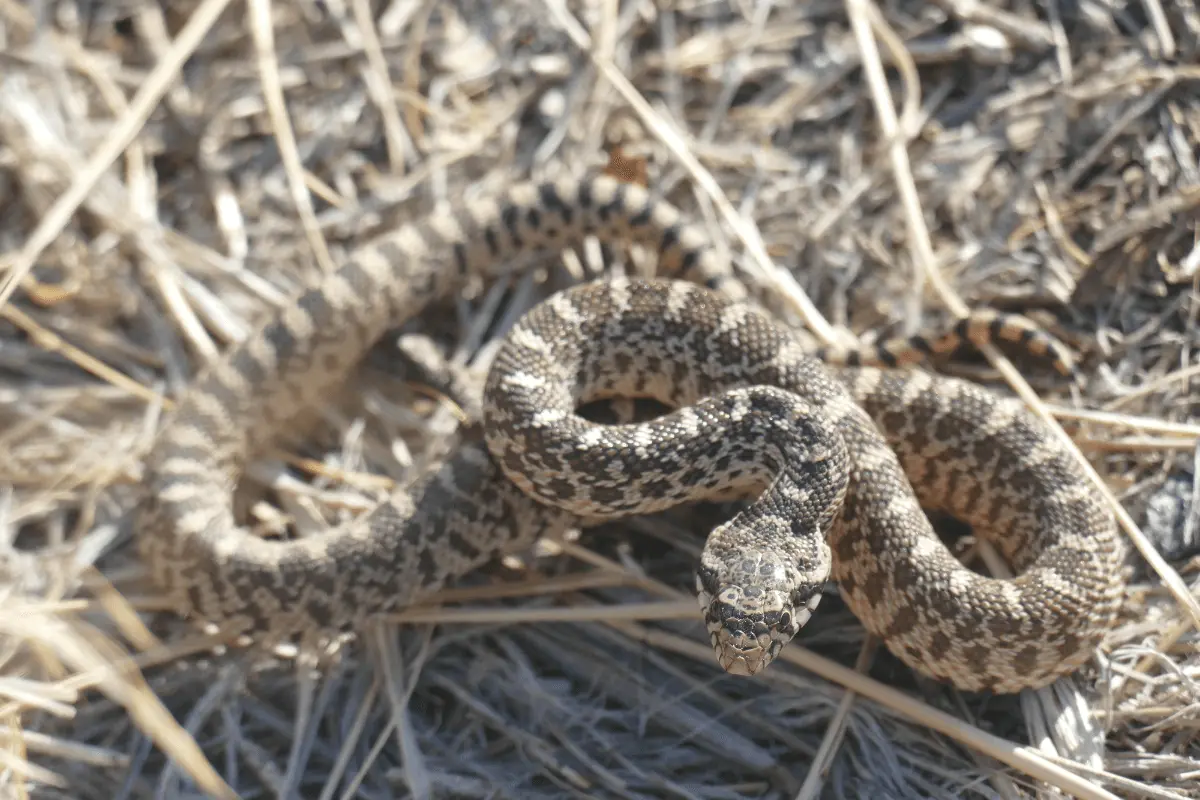
The Bullsnake, which is known for its size and ability to act like other animals, is also on the list of snakes that will hunt skunks. These strong snakes, found in the middle and southwestern parts of the United States, can reach lengths of eight feet or more, making them among the largest snakes in their native range.
In the absence of their preferred food sources, such as rodents, small mammals, and birds, they may occasionally risk taking on larger prey, such as skunks. Even though their large size and the ability to constrict help them defeat a skunk’s physical defenses, they still have to face the well-known chemical arsenal that skunks carry.
Eastern Indigo Snake (Drymarchon Couperi)
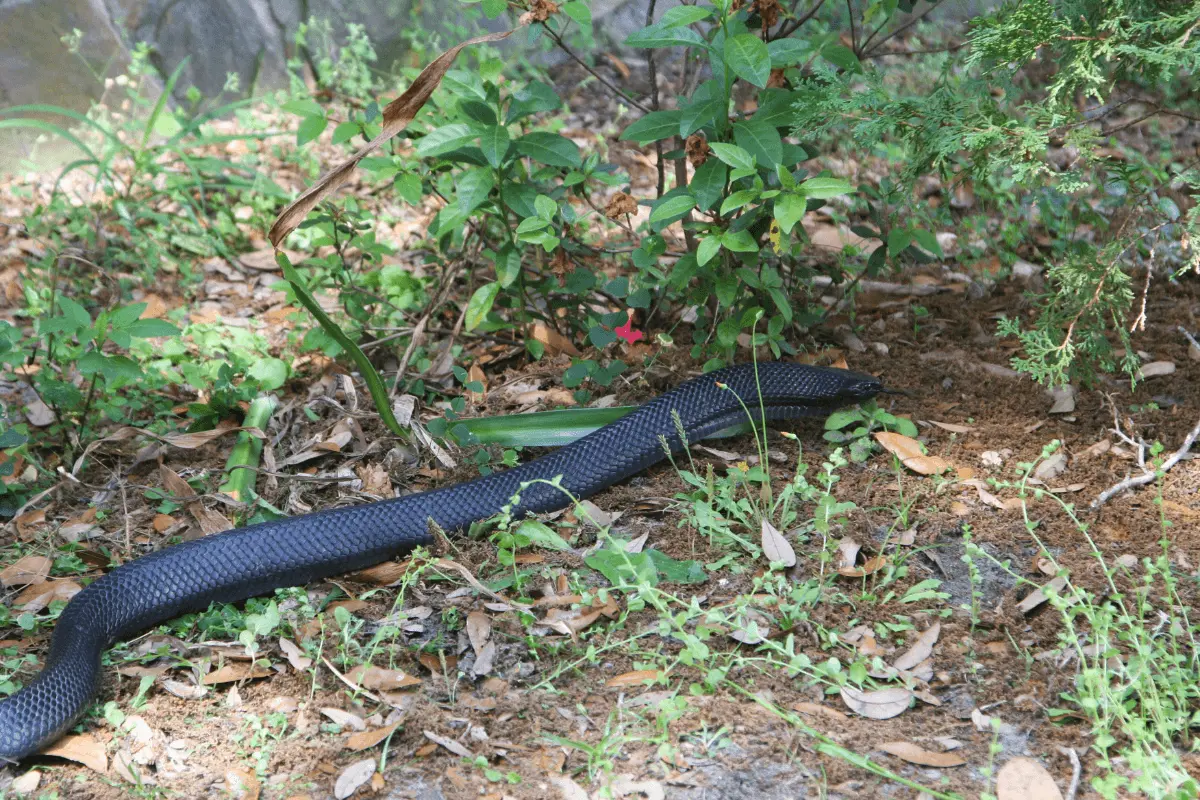
The Eastern Indigo Snake, the longest native snake species in the United States, is somewhat immune to many types of venom. This makes skunks an unavoidable but infrequent predator. These glossy, blue-black snakes can be found only in the southeastern United States, yet they have a varied diet.
Their main diet is tiny to medium-sized animals, but their size, typically over eight feet, and resistance against poison allow them to take on more dangerous prey like venomous snakes and skunks. Even though this kind of thing doesn’t happen very often, the Eastern Indigo Snake’s risky eating habits show how diverse and adaptable animals they are.
Common Kingsnake (Lampropeltis Getula)
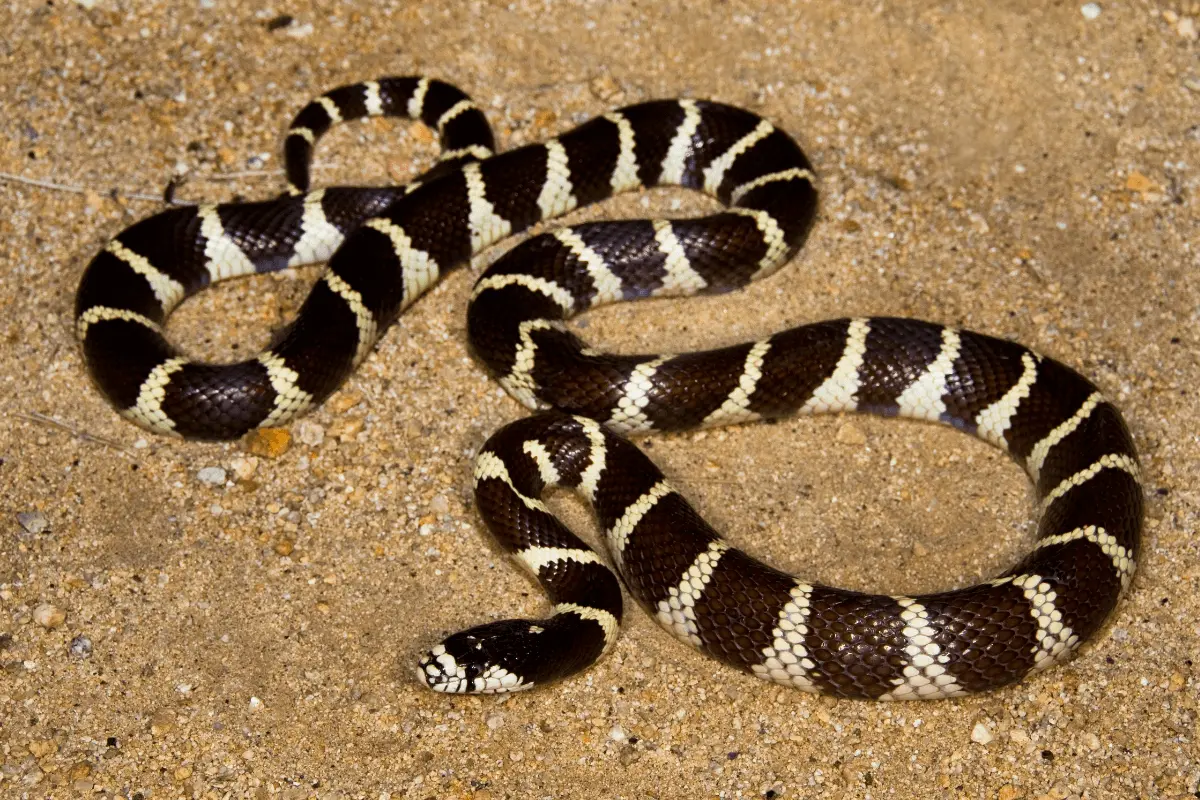
The Common Kingsnake is a species throughout the United States known for its daring eating habits. These constrictors are usually between three and six feet long and have a unique design of bright bands or spots. Most of the time, they eat small animals like rodents, birds, lizards, and even other snakes, which shows how well they can handle the poison of some snake species.
Kingsnakes can turn to skunks when other food sources are in short supply due to their adaptability and opportunistic eating. They can take on a skunk because they can squeeze and are immune to poison, but this doesn’t often happen because skunks are so good at protecting themselves.
Burmese Python (Python Bivittatus)
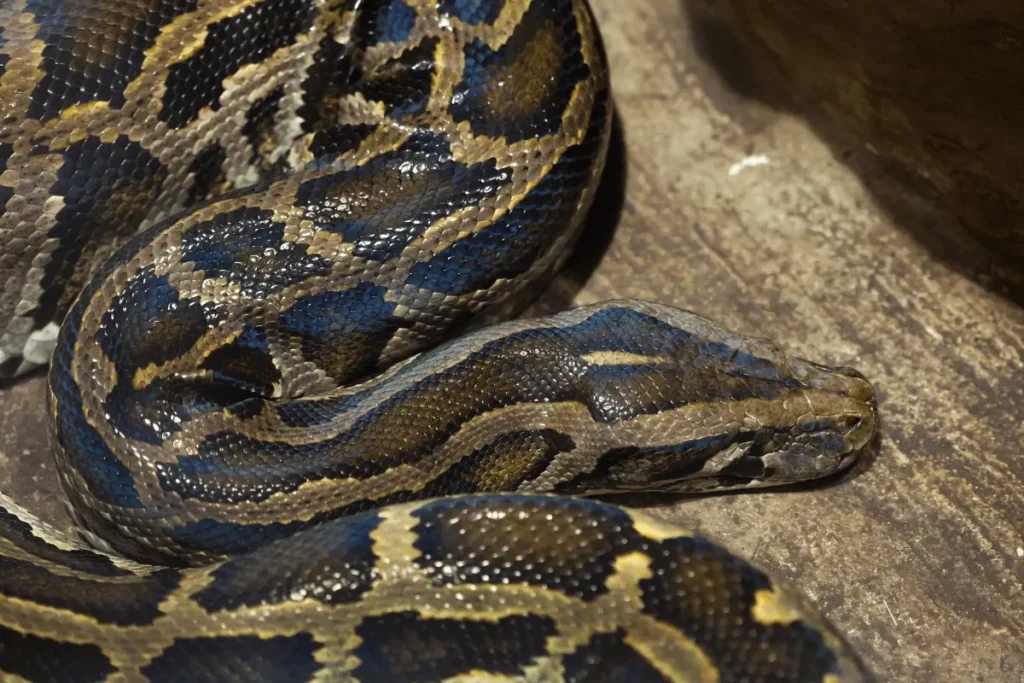
In Florida, USA, the Burmese Python, one of the world’s largest snakes, interacts with skunks. In South and Southeast Asia, where they live naturally, these giants usually eat various animals and birds. However, they can explore unique prey items like skunks in non-native settings because their diet is adaptable and opportunistic.
These pythons are highly dangerous because of their enormous size (they may grow to more than 15 feet in length) and their powerful constriction muscles. However, Burmese Pythons rarely prey on skunks, which is a testament to the efficiency of the skunk’s defenses.
How Skunks Eat Snakes?
Skunks are primarily omnivores, feeding on a variety of foods, including insects, worms, berries, roots, and even snakes on rare occasions. Skunks use their deft claws and lightning reflexes to take down more delicate snake species.
Skunks have strong canines and grinding molars, which they utilize to begin eating a snake from the head. Skunks aren’t only famous for their spray but also adept physical hunters who use their speed, flexibility, and sharp senses to kill and eat snakes.
Why Can’t Snake Venom Kill Skunks?
Skunks are only one of many shocking examples of animals that have developed a remarkable resistance to snake venom. This characteristic has been modified by evolutionary pressure overages. Skunks may safely interact with and eat venomous snakes because of their natural defenses.
The exact mechanisms are still a subject of research, although it is thought that they involve genetic modifications that reduce the harmful effects of venom. For example, the molecular targets of skunk venom may have changed over time so that they are no longer affected as strongly by the poisonous parts of the venom. This unusual resistance to snake venom is important for the survival of skunks in areas with high snake populations.
How to Keep Skunks Away from Your Snake?
Prevention is key to keeping the peace between your pet snake and any possible skunk visitors. Skunks are less likely to contact you if your yard and the snake’s enclosure aren’t appealing to them.
- First, ensure your trash cans are locked and remove any food sources that skunks could easily reach.
- Consider placing motion-sensor lighting next to the snake’s enclosure, as lights and motion tend to frighten off these nocturnal animals.
- Use citrus peels or commercially available deterrent sprays to keep skunks away from the border.
If your snake’s enclosure is outdoors, it must have a secure roof to protect it from predators and keep skunks out.
The Implications of Snake-Skunk Interactions
For the Ecosystem
The interactions between snakes and skunks show the complex processes at play in ecosystems. Skunk populations are kept in check by snake populations, and vice versa. To preserve biodiversity and equal distribution of resources, this equilibrium is important. These interactions can also put pressure on evolution, which could lead to unique adaptations like the skunk’s ability to fight poison. It’s a great example of how predators and prey work together to change their surroundings over time.
For Human Interactions
Knowing how snakes and skunks interact can teach us something about our interactions. It tells us about possible dangers in areas where venomous snakes might be forced to interact with skunks because there isn’t enough food.
This information is also useful for wildlife conservation and management purposes. This knowledge is vital for those who care for reptiles or skunks as pets. Finally, understanding these interdependencies increases our respect for nature’s interconnection and highlights our responsibility to act as protectors of the environment.
Final Thoughts
In conclusion, snake-skunk interactions provide a rich tapestry of evolutionary tactics and survival instincts. Skunks aren’t easy prey, especially for the brave snake species, but they’re not completely defenseless, either, thanks to their quick reactions and highly strong spray.
As we’ve seen, these interactions are shaped by a wide range of circumstances, all reflecting the delicate balance of the natural world. As observers and caretakers of this natural show, knowing about these interactions deepens our knowledge of biodiversity, improves our interactions with animals, and reminds us of our responsibility to keep this delicate balance of life going.
